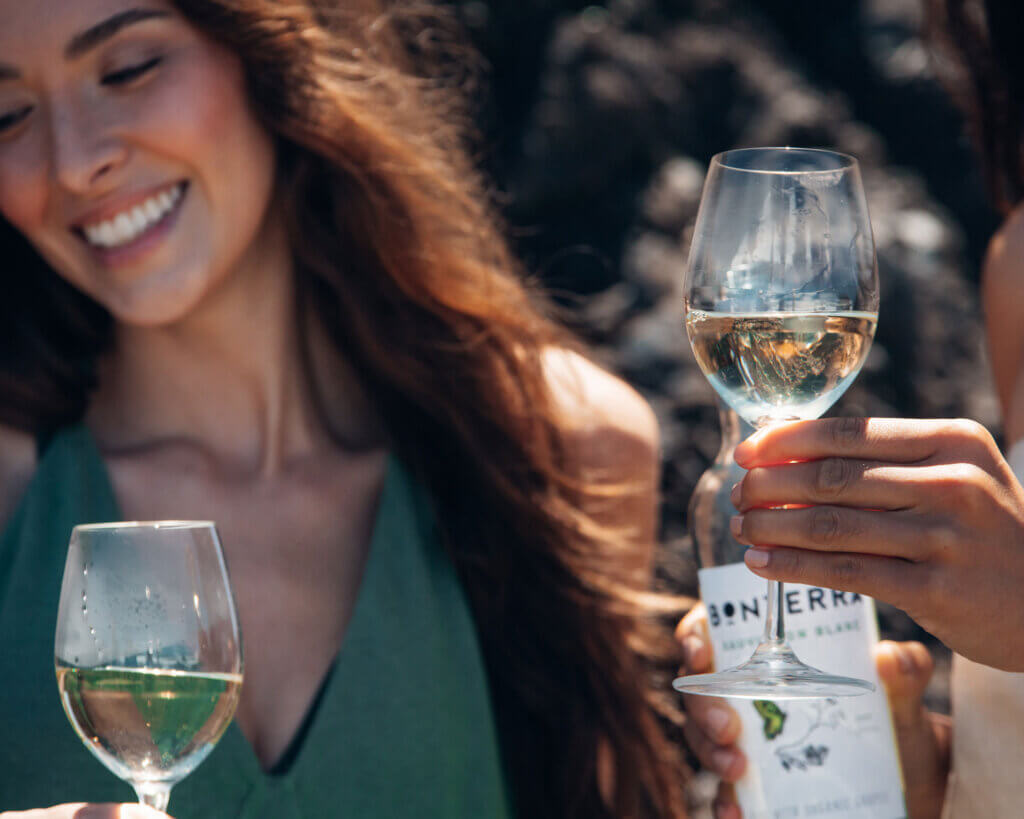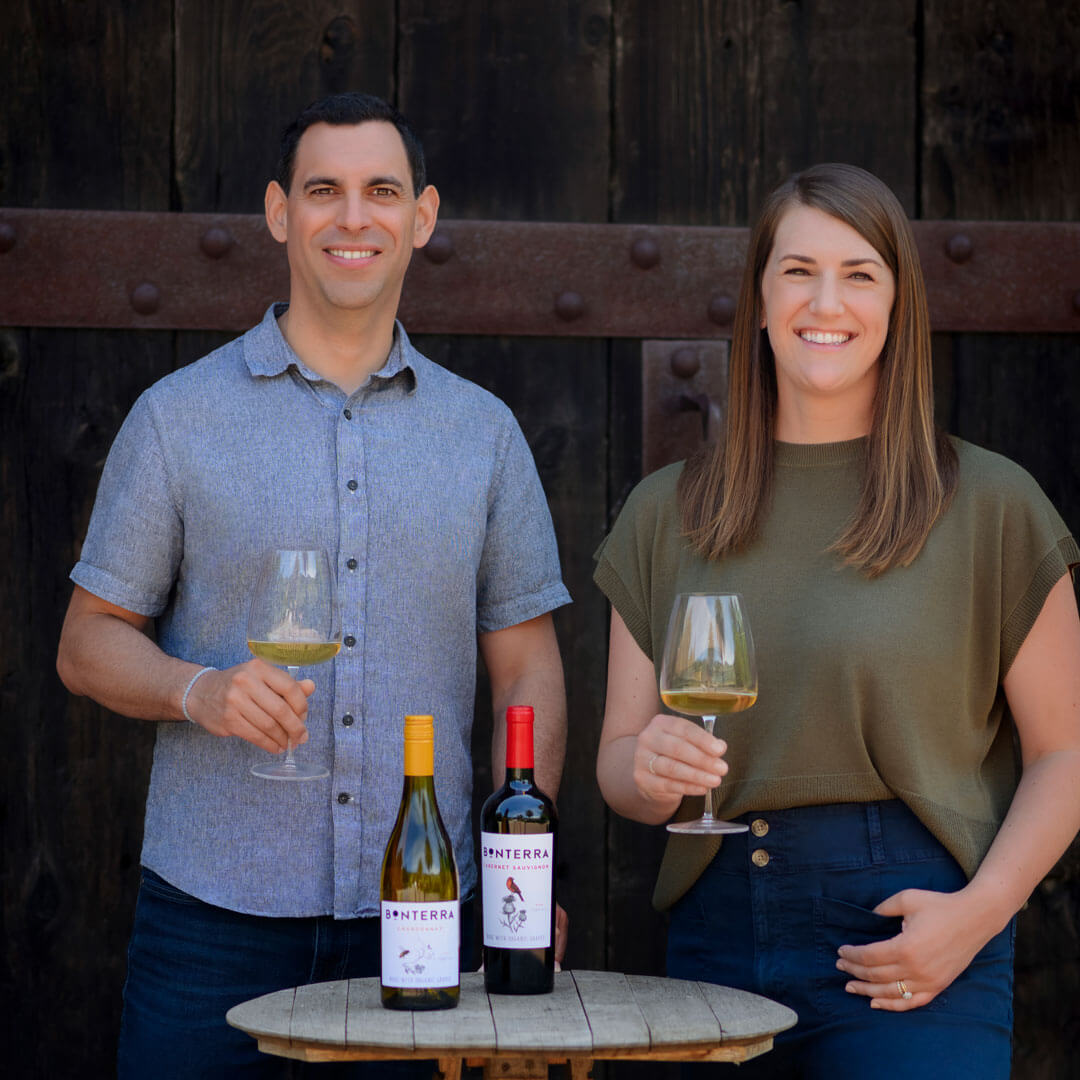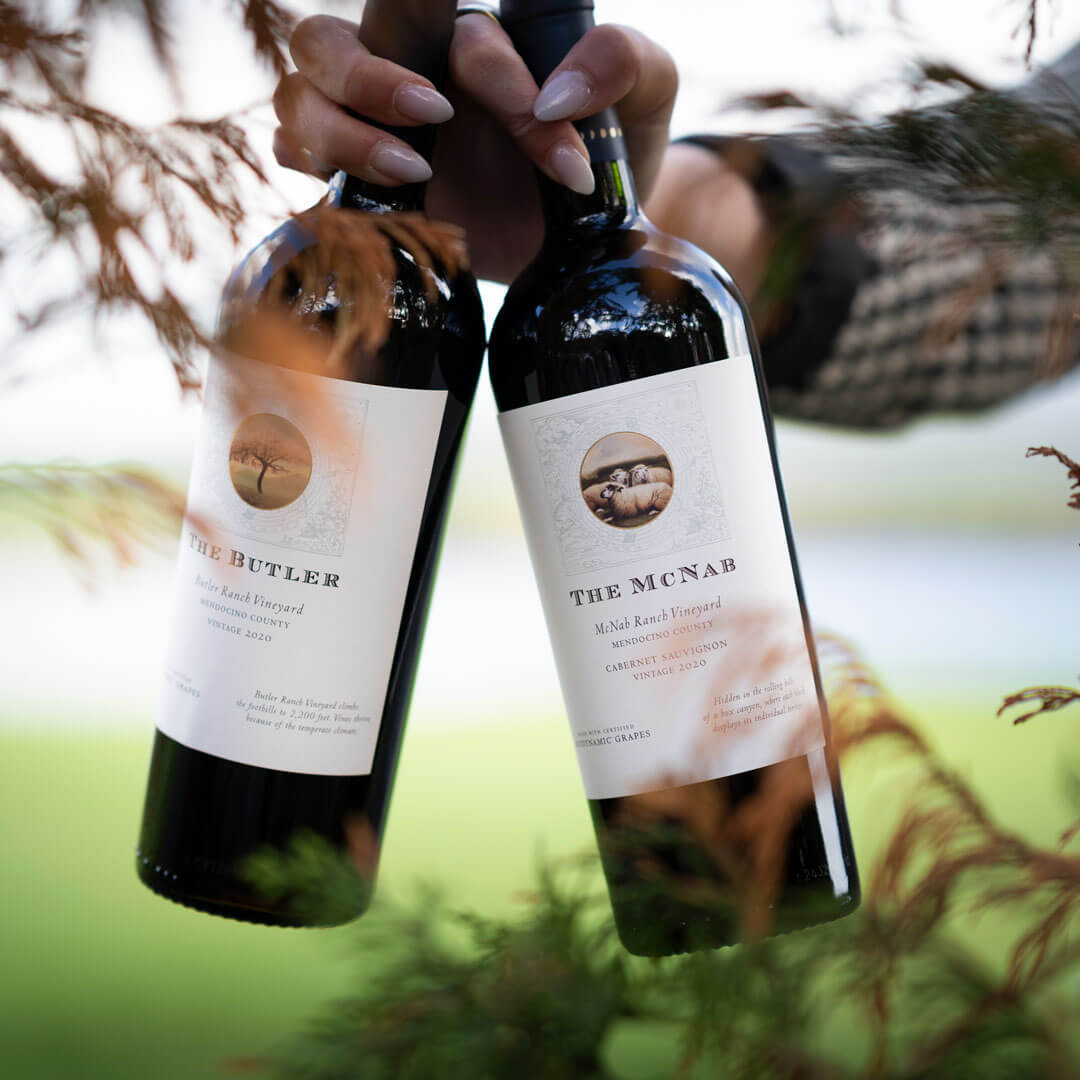Introduction to Different Types of White Wine
From fresh Alvarinho to powerful Zierfandler, the world of white wine offers an incredible range of flavors, textures and aromas. White wine grapes can be used to make still white wines, sparkling wines, sweet wines, amber/orange wines, sherries, and brandies. Some white wines are at their best shortly after harvest, while others are aged for several years in casks, oak barrels, or even clay amphorae to bring out different aromas and textures. Most white wines today are created to be consumed within a few years of their vintage date, so you can enjoy the fresh fruit character of the variety at its peak.
At Bonterra wine, our commitment to using only organically grown grapes keeps the vibrant personality of each white variety center stage, celebrating its unique identity in the most natural way possible. Our wines let you discover the essence of every grape variety, and support responsible stewardship of the land at the same time. That’s a solid win-win in our book, and why we’ve been doing this for over 30 years.
Understanding White Wine Varieties
The world of white wine is vast, with hundreds of different white grape varieties grown around the globe. With so many options, where do you begin? Let’s start with three of the most popular white wine varieties: Chardonnay, Sauvignon Blanc, and Pinot Grigio (also called Pinot Gris). These global favorites are favorites for good reason!
Chardonnay is prized for its versatility. This famous grape grows easily in many different parts of the world, and can produce a huge diversity of wine styles – from sparkling wines like blanc de blancs Champagne, to crisp and mineral still wines, to rich and buttery oak-aged versions and everything in between. Oaked Chardonnay provides flavor notes of creamy vanilla and spices, while unoaked Chardonnay is more crisp and fruity in taste. Chardonnay is the perfect pairing for anything from seafood to salads. If you think you don’t like Chardonnay, you just might not have tried the right style for you yet. Chardonnay wines can be as diverse as the people who make them!
Sauvignon Blanc has charmed the world with its refreshing citrus aromas. The wine region has significant effects on the taste for this wine. In colder climates, this grape produces racy, zesty whites with lots of lemony acidity and sometimes grassy notes, but in warmer places it can offer tropical notes of fresh pineapple, kiwi or passionfruit. Some Sauvignon Blanc wines are made in oak barrels to bring a richer texture and aromas of buttery pastry. Most, though, are made without oak so that the citrusy flavor can shine through more clearly.
Pinot Grigio, a.k.a. Pinot Gris, is another highly versatile grape with aromatic pear and melon notes, and a gentler acidity than Sauvignon Blanc. Some Pinot Grigio wines are fresh and light with delicate fruit aromas, while others offer more perfumed notes and luscious textures. The lighter style is ideal for seafood and salads, while the richer style can complement cheeseboards, creamy curries, and even sausages.
The Role of Terroir and Winemaking
Clearly, just knowing the name of a white wine variety isn’t enough to tell you how it’s going to taste. The two most important factors that impact a wine’s style are terroir and winemaking.
Terroir is a French word that wine experts use to describe the unique grape growing conditions of a particular site that don’t tend to change year to year. Terroir includes climatic and geologic conditions – like how windy or wet the site tends to be, or the composition of its soils – as well as physical circumstances like slope, elevation and sun exposure. All of these details influence how a grapevine grows and ripens its clusters, and what that fruit will taste like once it is fermented into wine. At Bonterra, we believe that farming organically allows vines to express their terroir more clearly, since they are not being treated with synthetic chemicals or excessive amounts of sulfur.
With white wine grapes, many winemaking details can impact the style of the finished wine. One of the most helpful things to know is whether the winemaker used oak to make the wine. Fermenting or aging in oak barrels typically brings a richer texture and distinctive buttery character. Wines made without oak tend to be lighter in body, with the emphasis on the variety’s fresh, fruity flavors. Both styles can be delicious, but each has its advantages when it comes to pairing with food.
Ideal Serving Temperatures for White Wines
While many wine drinkers enjoy all types of white wines straight out of the fridge, the ideal way to experience everything these wines have to offer is a little bit warmer. Refrigerators store their contents around 35 degrees Fahrenheit – which is great for keeping food fresh, but problematic for wine since we can’t smell or taste nearly as well at that temperature. Although acidity and some texture still come through, very cold temperatures mask nearly all of wine’s intriguing aromas and flavors.
We recommend taking your white wines out of the refrigerator a few minutes before serving, so that you are pouring them between 45-52°F. At these temperatures, the wines’ unique aromatic compounds can reach our receptors, and the wines still feel fresh and energetic. Depending on the white wine type the recommended serving temperature can change. With richer or more aromatic whites like Chardonnay, aim for the higher end of that range: 48-52°F. With lighter-bodied Pinot Grigio or Sauvignon Blanc, the upper 40s are ideal.
Organic White Wines at Bonterra
Bonterra’s award-winning white wines are an ideal way to explore the world’s most popular white wine grapes. By making wine responsibly at our organic wineries, we capture the true essence of each grape and the unique terroir that produced it – without damaging the earth or dumping excessive sulfites into your glass.
Bonterra Chardonnay: Our award-winning Chardonnay is a classically styled example of this world-famous grape. Our winemakers use just a touch of oak to bring an elegant richness, while keeping the bright fruit and acidity in natural balance. This wine shines with creamy pastas, buttery seafood and cheeses, and mild curry sauces featuring coconut or nut milks. Best served at 48-52°F.
Bonterra Sauvignon Blanc: Crisp and refreshing, Bonterra Sauvignon Blanc is made without oak to highlight the beautiful fresh citrus aromas of the grape. This energetic, light-bodied white wine makes a perfect partner with salads, herbaceous noodle bowls, light seafood or chicken dishes, and fresh goat cheeses. Best served at 45-50°F.
Bonterra Pinot Grigio: We craft our Bonterra Pinot Grigio without oak for a light, easy-to-drink style that pairs with any occasion. Pour it with simple pasta dishes, light cheeses and delicate white fish, or just your favorite happy hour snack. Best served at 45-48°F. (This limited-production wine is a wine club exclusive; join today to access all of our fantastic white and red wines!)
White wines are some of the most exciting and versatile wines out there – especially when they’re crafted with care and sustainability in mind. You shouldn’t have to choose between drinking delicious fine wine and doing the right thing for the planet. With Bonterra, you can do both.
At Bonterra, we do more than just white wines and you can explore the types of red wine that we offer as well. For your next wine tasting, discover fine wines with our premium white wine variety bundle from Bonterra. From sweet to dry white wines, there is something for every flavor profile. Check out Bonterra’s lineup of award-winning white wines online to discover the difference organic farming can make – in your wine glass, in farming communities, and for our world.




